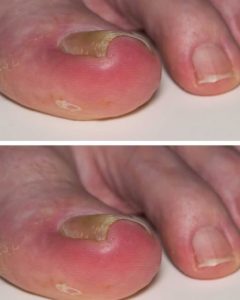
How to Manage Ingrown Toenails: At-Home Remedies and Prevention Tips
If you’re dealing with redness, swelling, or pain around the edges of your toenails, chances are you may have an ingrown toenail. This common condition occurs when the edge of the toenail grows into the surrounding skin, leading to discomfort, inflammation, and, in some cases, infection. While ingrown toenails are most often found on the big toe, they can occur on any toe and are usually the result of factors like improper nail trimming, tight or poorly fitting shoes, or even your natural foot shape and nail growth.
Dealing with an ingrown toenail can be frustrating, especially if your next doctor’s appointment feels far off. However, there are several simple at-home remedies and practices you can try to relieve discomfort, prevent infection, and manage the condition until you can see a healthcare professional. By understanding the symptoms, causes, and treatment options for ingrown toenails, you can take proactive steps to ease the pain and reduce the risk of complications. Whether you’re dealing with the issue for the first time or you’ve experienced ingrown toenails in the past, this guide will provide you with practical advice on how to care for your feet and prevent future problems.
What Are the Symptoms of an Ingrown Toenail?
Common signs of an ingrown toenail include:
Redness
Swelling
Pain around the edges of the nail
In severe cases, pus or skin overgrowth near the nail
Catching these symptoms early can help prevent the condition from getting worse and allow for easier at-home treatment.
Home Remedies for Immediate Relief
To ease the pain and reduce swelling, try soaking your foot in warm water with Epsom salt for 15-20 minutes a few times a day. After soaking, gently lift the edge of the toenail and place a small piece of cotton or dental floss underneath it. This will help the nail grow above the skin. You can also apply an antiseptic ointment to avoid infection.
Foot Hygiene Tips
Good foot hygiene can help prevent and manage ingrown toenails. Here’s what you can do:
Wash your feet daily with soap and water, and dry them thoroughly.
Trim your toenails straight across and avoid cutting them too short.
Wear clean socks made from breathable material and shoes that fit well.
When to See a Doctor
If the pain worsens or if you notice signs of infection, such as increased redness, pus, or severe pain, it’s time to see a doctor. A healthcare provider can help with treatments like lifting the nail, removing part of the nail, or prescribing antibiotics if necessary.
How to Prevent Ingrown Toenails
To reduce the risk of developing ingrown toenails:
Trim your nails straight across and avoid rounding the corners.
Wear shoes that have enough room for your toes and avoid tight footwear.
Regularly check your feet for signs of ingrown toenails, especially if you have diabetes or circulation issues.
Over-the-Counter Options
You can also try over-the-counter treatments to help manage the symptoms. Antiseptic creams can help prevent infection, and pain relievers like ibuprofen or acetaminophen can ease discomfort. Some topical treatments can also soften the nail and skin, making it easier to manage the condition at home.
Please Head On keep on Reading (>)
